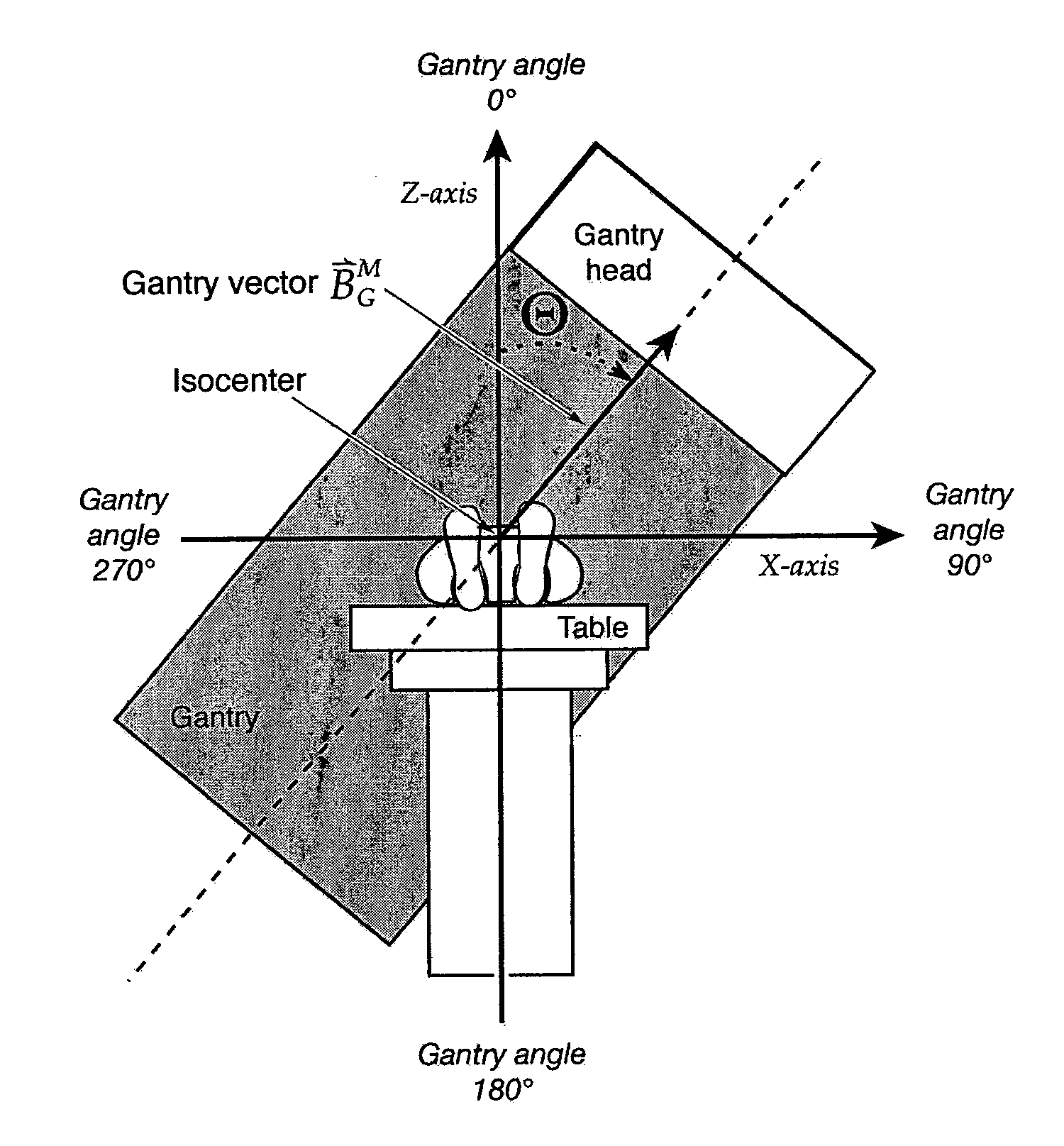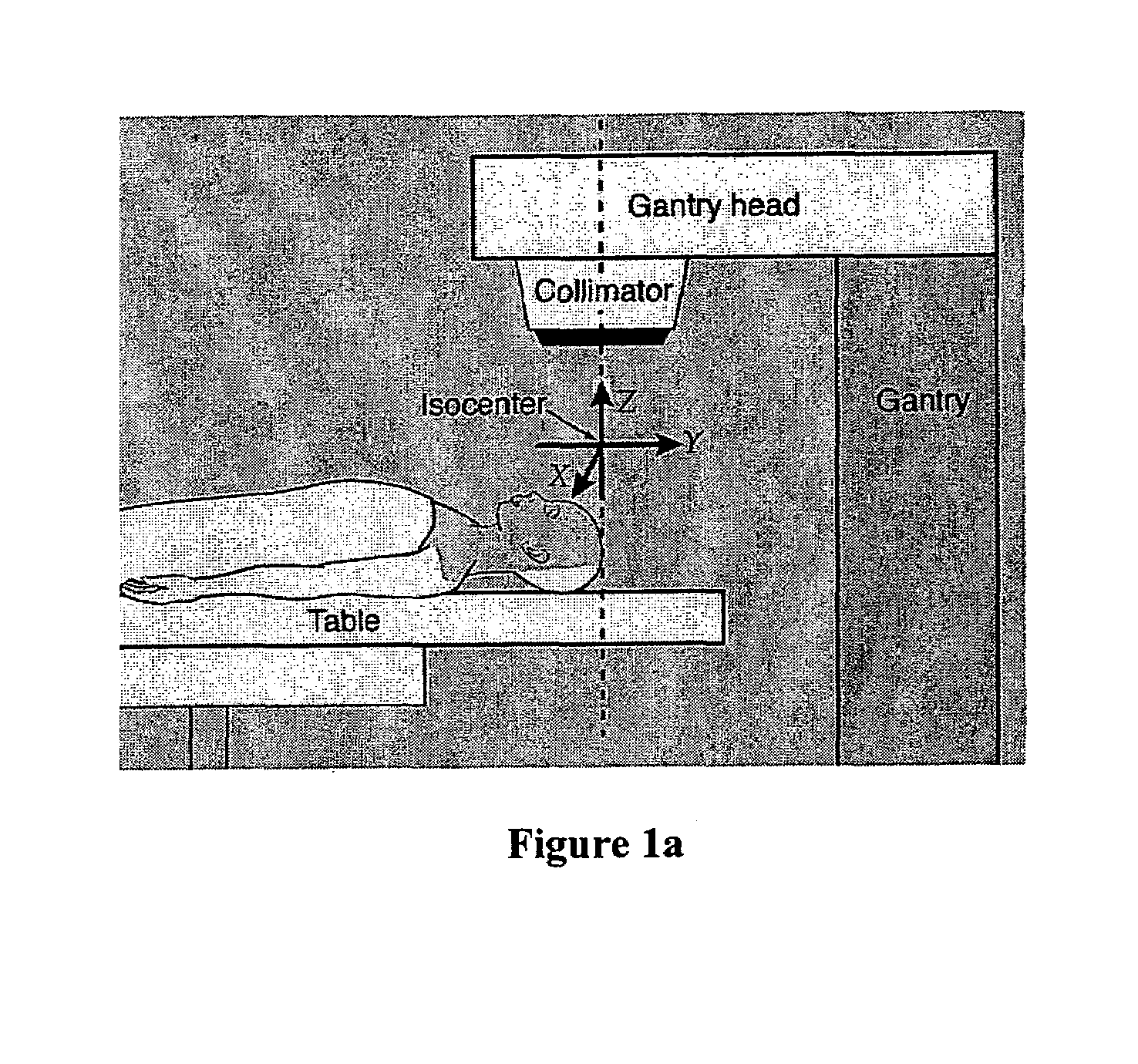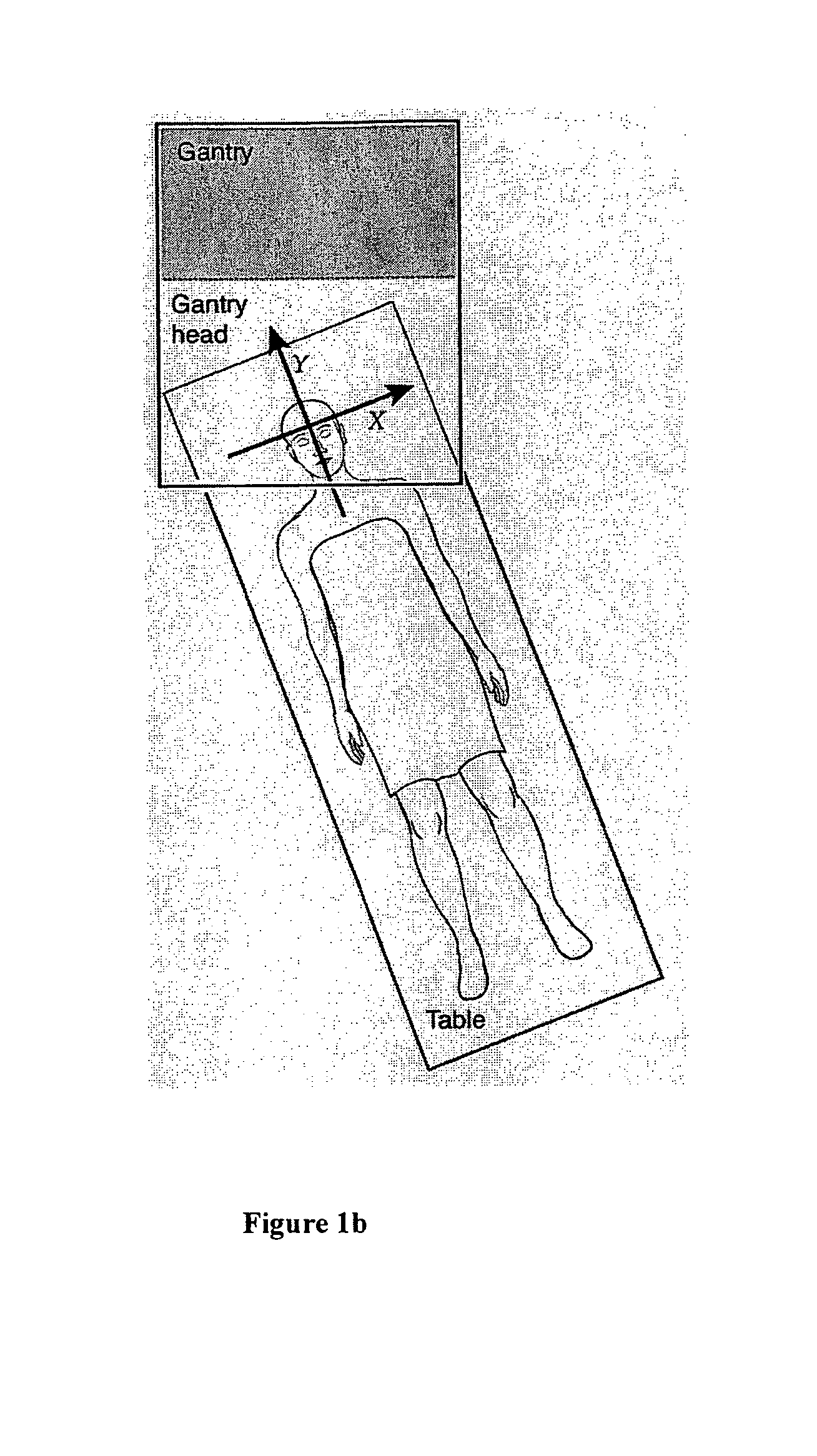Method to implement full six-degree target shift corrections in radiotherapy
a target shift and correction technology, applied in the field of correcting errors, can solve the problems of other methods such as fixed points, and achieve the effect of facilitating correction and facilitating target position variations
- Summary
- Abstract
- Description
- Claims
- Application Information
AI Technical Summary
Benefits of technology
Problems solved by technology
Method used
Image
Examples
example
[0098]The method of the presently preferred embodiment was utilized in a phantom case. FIGS. 3 and 4 depict the results.
[0099]In this example, a brain tumor patient was treated with 3-D conformal radiation therapy. A set of CT scans were acquired before treatment for the purpose of treatment planning. A treatment plan was designed based on the CT scans (using Varian Eclipse™ treatment planning system) and three 6 MV photon beams were used. These three beams are labeled as field 1, field 2, and field 3, respectively. Beam portals of field 1, field 2 and field 3 on the corresponding digitally reconstructed radiographs (DRR) are shown in FIGS. 3a—a, 3b—a, and 3c—a, respectively. Some of the planned beam parameters are also listed in Table 1. A set of CT scans (“treatment” verification CT scan) were acquired using a CT simulator with the patient in the treatment setup position as determined in the treatment plan. A facial mask was used as a fixation device. The three beam portals of fie...
PUM
 Login to View More
Login to View More Abstract
Description
Claims
Application Information
 Login to View More
Login to View More - R&D
- Intellectual Property
- Life Sciences
- Materials
- Tech Scout
- Unparalleled Data Quality
- Higher Quality Content
- 60% Fewer Hallucinations
Browse by: Latest US Patents, China's latest patents, Technical Efficacy Thesaurus, Application Domain, Technology Topic, Popular Technical Reports.
© 2025 PatSnap. All rights reserved.Legal|Privacy policy|Modern Slavery Act Transparency Statement|Sitemap|About US| Contact US: help@patsnap.com



